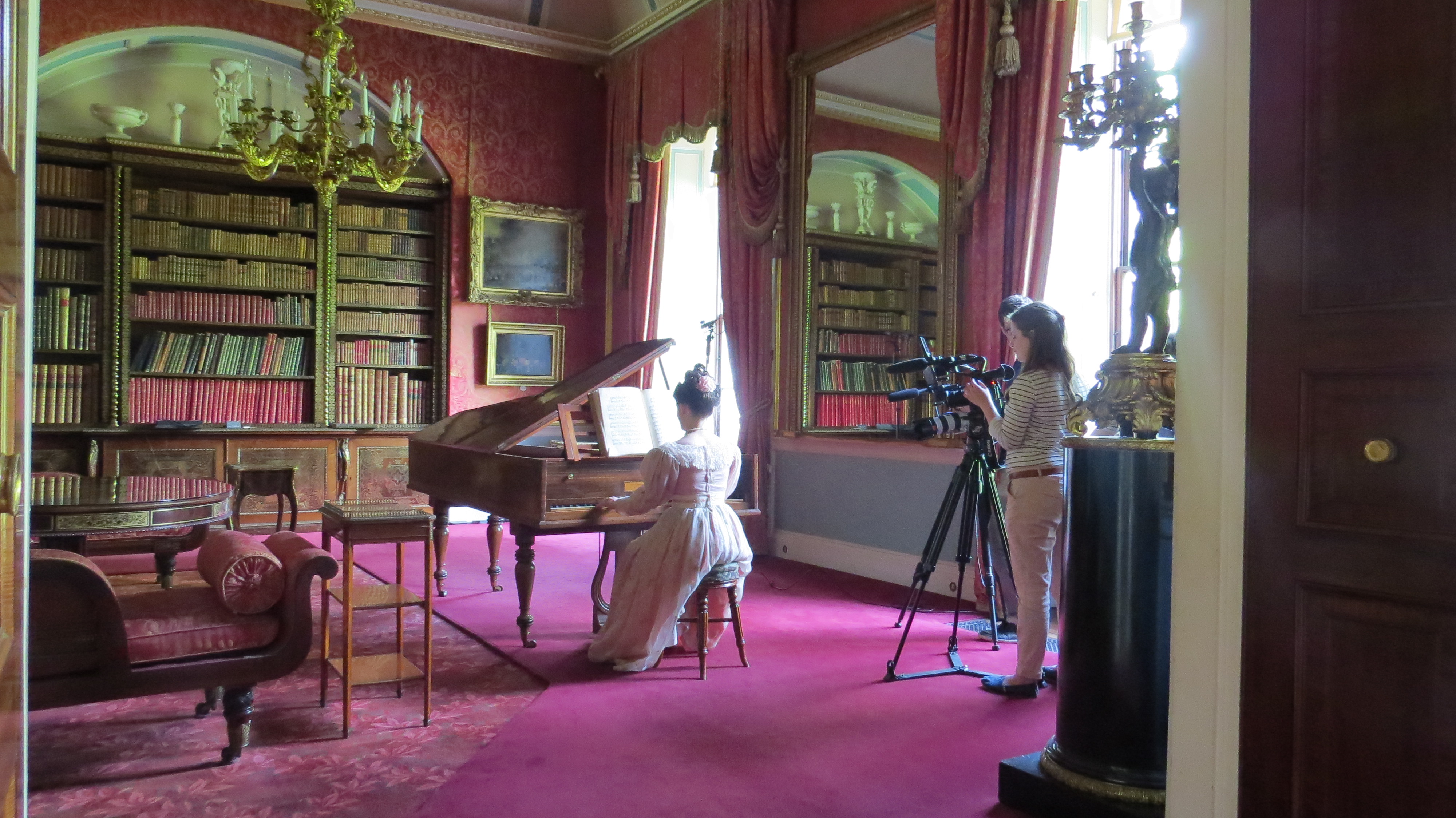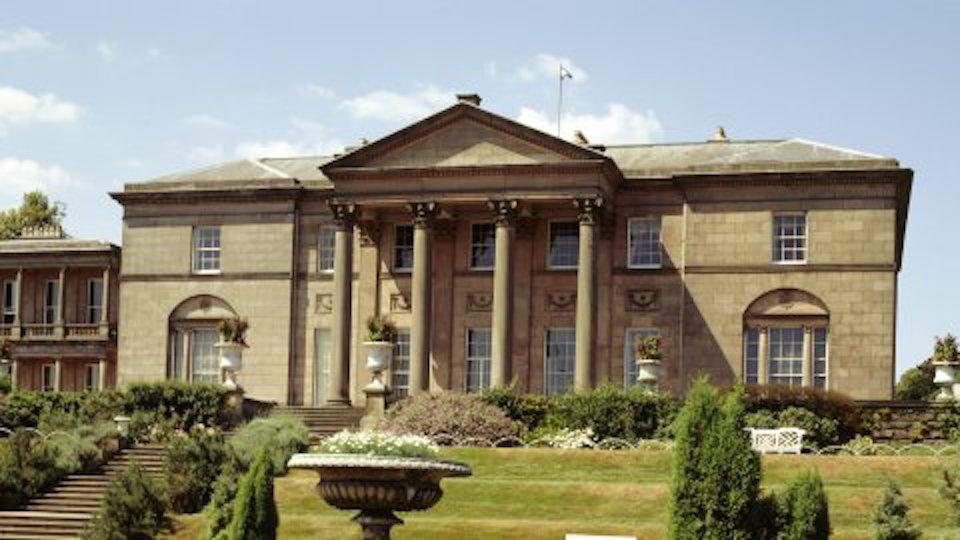
Tatton Park
The house and collections
Tatton Park (Cheshire) is a neoclassical mansion built for the Egerton family in the late 18th and early 19th centuries to designs by Samuel Wyatt and Lewis William Wyatt. It is owned by the National Trust and managed by Cheshire East Council. It is among the National Trust's most complete estates, featuring an outstanding collection of furniture made by Gillows of Lancaster for the house, a significant collection of paintings, and one of the most important libraries owned by the Trust. The music collection includes approximately 50 binder's volumes and other bound scores, and a considerable amount of unbound sheet music. The bulk of this music belonged to Elizabeth Egerton, née Sykes, who grew up at Sledmere (Yorkshire) and was educated in London. Elizabeth brought her large music collection to the house when she married her cousin Wilbraham Egerton in 1806, and continued collecting scores after her marriage. Other owners include Wilbraham himself; his sister Mary Egerton; and Elizabeth and Wilbraham's daughter Charlotte and daughter-in-law Lady Charlotte Egerton, née Loftus. A 1789 Kirckman harpsichord with provenance to the house may also have been brought there by Elizabeth Sykes from Sledmere. Tatton Park features an opulent Music Room designed by Lewis Wyatt, completed c. 1819 and replacing an earlier Music Room of c.1792.
RESEARCH
Research projects described here result from long-term collaboration between Tatton Park and the Department of Music at the University of Southampton, which began during the At Home With Music research project led by Professor Jeanice Brooks. A major boost came in 2009, with two PhD studentships funded under the Collaborative Doctoral Awards scheme of the Arts and Humanities Research Council, in partnership with the National Trust and Cheshire East Council.
With the help of sustained and enthusiastic support from house manager Caroline Schofield, staff and volunteers at Tatton Park, new research by Brooks and three PhD students - Leena Rana, Penelope Cave and Katrina Faulds - uncovered substantial documentation of musical activity in the house, and explored its relationship to larger themes of architectural history, the history of piano pedagogy, ideals of elite identity, and the cultivation of social dance and dance music.
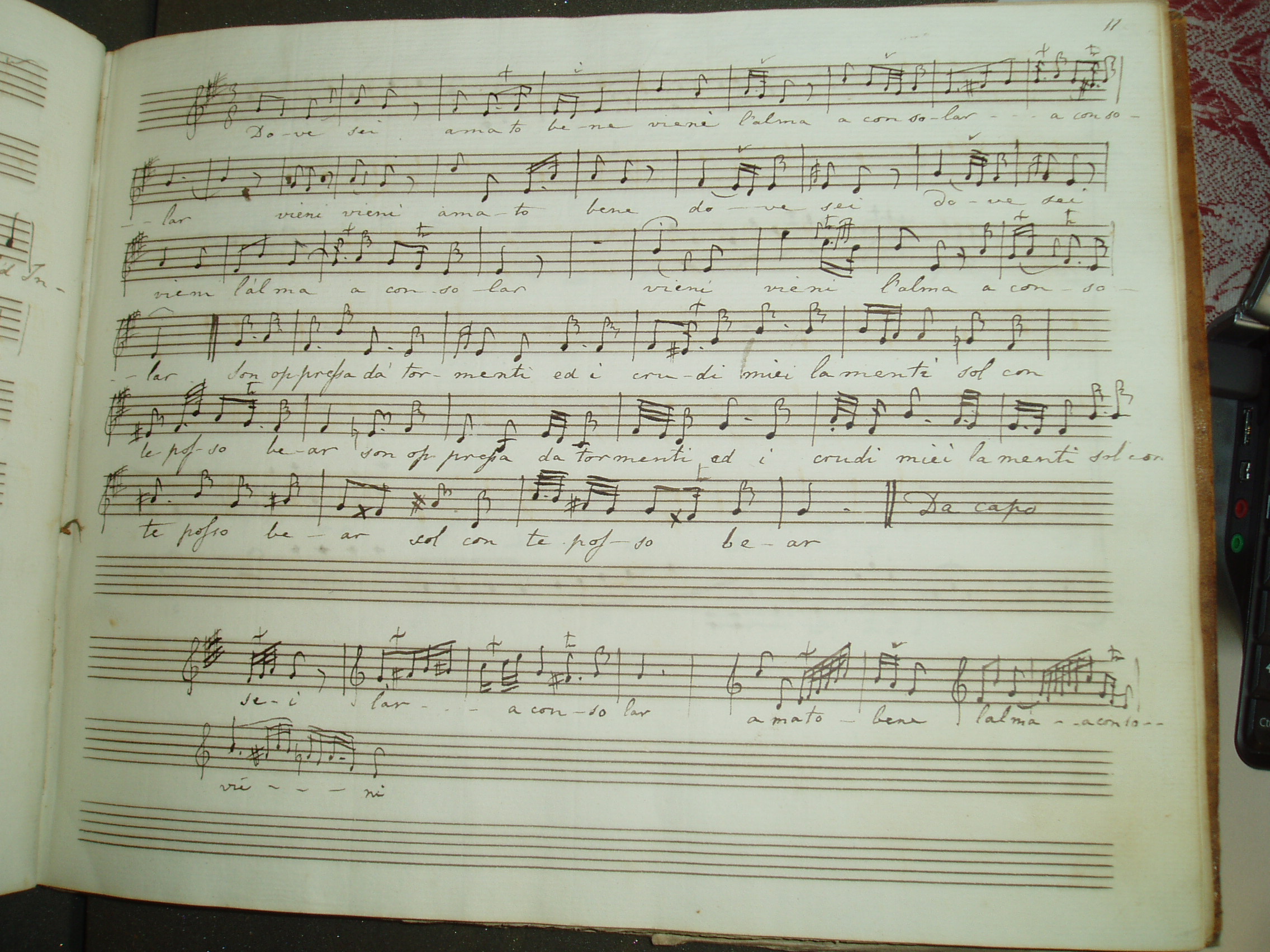 Their research has appeared in:
Their research has appeared in:
Brooks, Jeanice. “Musical Monuments for the Country House: Music, Collection and Display at Tatton Park,” Music & Letters 91:4 (2010).
Rana, Leena. "Music and Elite Identity in the English Country House, c.1790-1840." PhD thesis, University of Southampton, 2012.
Cave, Penelope. "Piano Lessons in the English Country House 1785-1845." PhD thesis, University of Southampton, 2013.
Faulds, Katrina. "Invitation pour la danse: Social Dance, Dance Music and Feminine Identity in the English Country House c.1770-1860. PhD thesis, University of Southampton, 2015.
As their research developed, the students made regular presentations to Tatton Park's volunteers. The National Trust's head librarian Mark Purcell highlighted the ongoing research in 'Adding the missing soundscape: new research into the Trust's unexplored treasure house of printed music,' National Trust Arts, Buildings & Collections Bulletin [ABC Bulletin] Summer 2010: 6-7, helping to spread news of the project within the heritage sector. The research group worked with house staff and the National Trust to organise long-term loan of an 1817 Dettmer square piano, a more suitable instrument for much of the repertory in the collection than the harpsichord. This instrument is now displayed in the Yellow Drawing Room, a day sitting room of the type where smaller keyboards such as square pianos were often kept. An in-house team from Tatton Park also photographed the most important scores in the Tatton Park collection, a four-volume set of manuscripts of Henry Purcell's music; these images will soon be available online.
INTERPRETATION
Musical interpretation at Tatton Park must take account of considerable curatorial constraints as many of the spaces - in particular the Music Room - are fully furnished and allow visitor entry only on designated pathways, rendering them unsuitable for concert-style events. The Cupola Hall has a sprung dance floor and some space for seating; unfurnished rooms upstairs can also be set up for musical performance, but they are not accessible for disabled visitors and hold only 20-30 people. The Tenants' Hall can hold much larger groups and regularly hosts big events, but is far from the core of the house containing historical scores and instruments. To address these issues, the three experiments described below focussed on small-scale and interactive events and/or media works that could transcend the physical limitations of space.
Christmas 2011
Collaboration with the Royal Northern College of Music began with a programme for Tatton Park's week of special Christmas openings in December 2011. 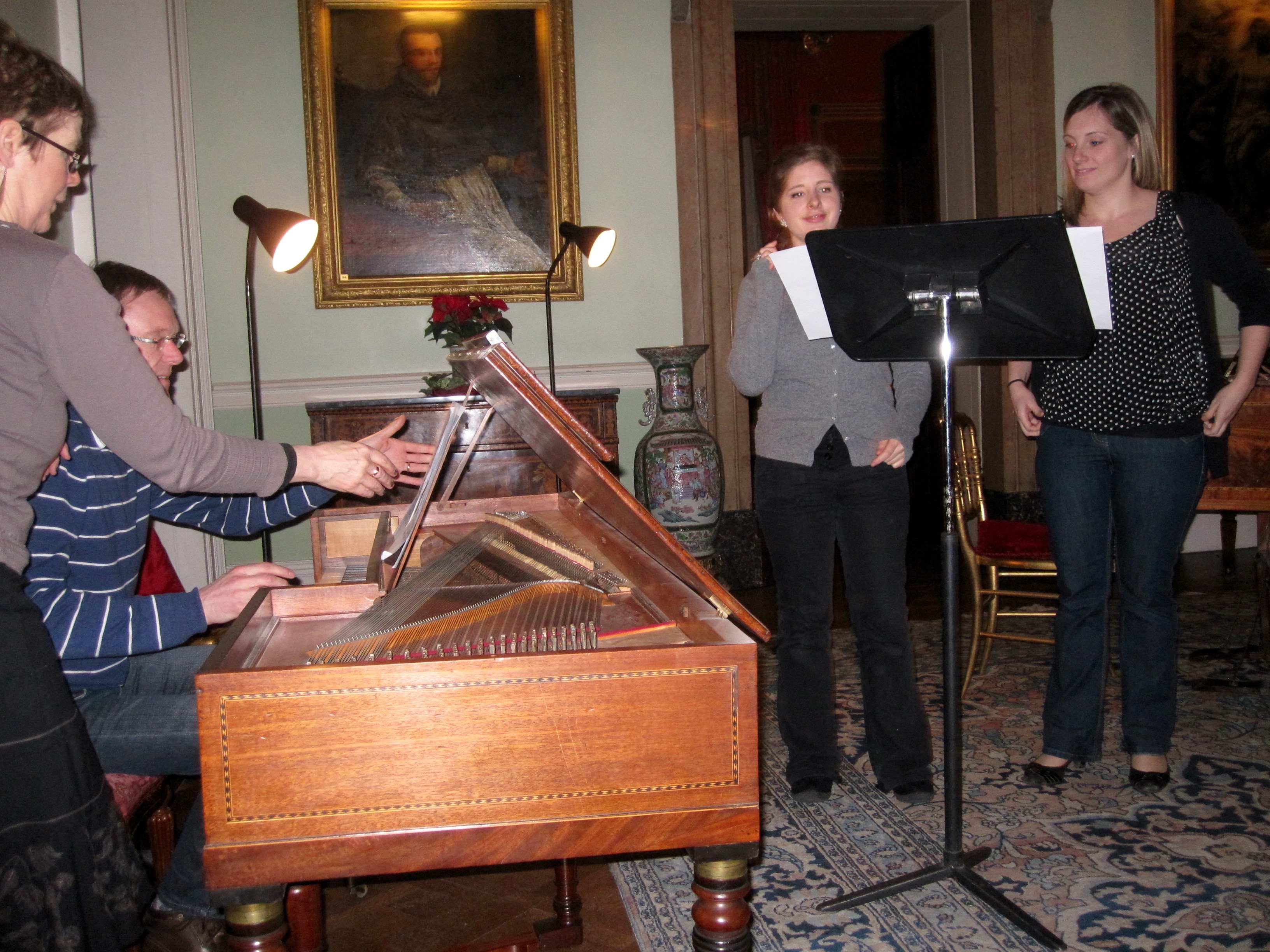 Students from the RNCM performed vocal and instrumental works from the collection in the Hall from 12-4pm daily, using scores prepared by the Southampton group. The main event mid-week featured a morning workshop during which Southampton PhD students presented original materials from Tatton Park's music collection to RNCM student singers, followed by a public afternoon masterclass on historical singing practice using the Tatton repertory with RNCM staff members Harvey Davies (fortepiano and harpsichord) and Richard Wistreich (bass). The masterclass coincided with several large visitor groups scheduled to arrive in the house for the Christmas decorations, and took place in a roped-off area in the Cupola Hall while visitors circulated through the house, stopping to listen and ask questions as they wished. The event offered the possibility of achieving educational goals (presentation experience for the Southampton students, historical performance training for the RNCM students) while providing a more interactive experience for visitors than what might be achieved in a formal concert.
Students from the RNCM performed vocal and instrumental works from the collection in the Hall from 12-4pm daily, using scores prepared by the Southampton group. The main event mid-week featured a morning workshop during which Southampton PhD students presented original materials from Tatton Park's music collection to RNCM student singers, followed by a public afternoon masterclass on historical singing practice using the Tatton repertory with RNCM staff members Harvey Davies (fortepiano and harpsichord) and Richard Wistreich (bass). The masterclass coincided with several large visitor groups scheduled to arrive in the house for the Christmas decorations, and took place in a roped-off area in the Cupola Hall while visitors circulated through the house, stopping to listen and ask questions as they wished. The event offered the possibility of achieving educational goals (presentation experience for the Southampton students, historical performance training for the RNCM students) while providing a more interactive experience for visitors than what might be achieved in a formal concert.
A total of c.500 visitors experienced all or part of the Christmas interventions. Of the 320 who responded to exit surveys, 58 identified the live music as the most enjoyable aspect of their visit to Tatton Park (comments included 'enjoyed authenticity of music'; '[the highlight was] real people playing real old instruments').
Tatton Park Biennial 2012
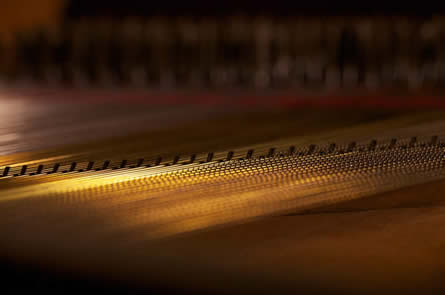 The Tatton Park Biennal is a major contemporary arts show. Its third edition, curated by Danielle Arnaud and Jordan Kaplan, featured the theme 'Flights of Fancy' and ran from 12 May to 30 September 2012. The event featured new site-specific commissions for both the Mansion and Park, and the Tatton Park staff and Southampton group worked to advise the curators on a commission that would relate to the house's music collection and musical history.
The Tatton Park Biennal is a major contemporary arts show. Its third edition, curated by Danielle Arnaud and Jordan Kaplan, featured the theme 'Flights of Fancy' and ran from 12 May to 30 September 2012. The event featured new site-specific commissions for both the Mansion and Park, and the Tatton Park staff and Southampton group worked to advise the curators on a commission that would relate to the house's music collection and musical history.
Artist Aura Satz was commissioned to produce a response to the Mansion's Music Room in collaboration with the research team. Her Sound Ornaments in the Music Room takes the theme of 'fancy' as ornament, using extended close-up tracking shots of the elaborate patterns in the furniture and instruments of the Music Room to create a form of visual notation. The film's score is by Larry Goves (Southampton PhD 2011, lecturer in composition at the Royal Northern College of Music) and PhD researchers Penelope Cave and Katrina Faulds played the harpsichord and square piano to generate both sounds and images for the film during a (cold!) two-day session in February 2012.
Goves's score used manuscript ornamentation copied by Elizabeth Sykes into her music books as the basis for keyboard miniatures (later included in the composer's pieces for harpsichord, Uninhabited Islands) and for vocal lines that transformed the short decorations into long melodies, echoing the intense scrutiny of architectural ornament that animates Aura Satz's film. The film was projected onto a brass plate mounted within the marble fireplace of the Music Room (itself framing the film with carved musical ornament) with sound issuing from hidden speakers, creating a sense of ghostly presence in the Music Room as the instruments and furniture came to life.
The relationship of the film to the house and its collections was explained in 'Interpreting the Archives', an exhibition of original musical materials with descriptive 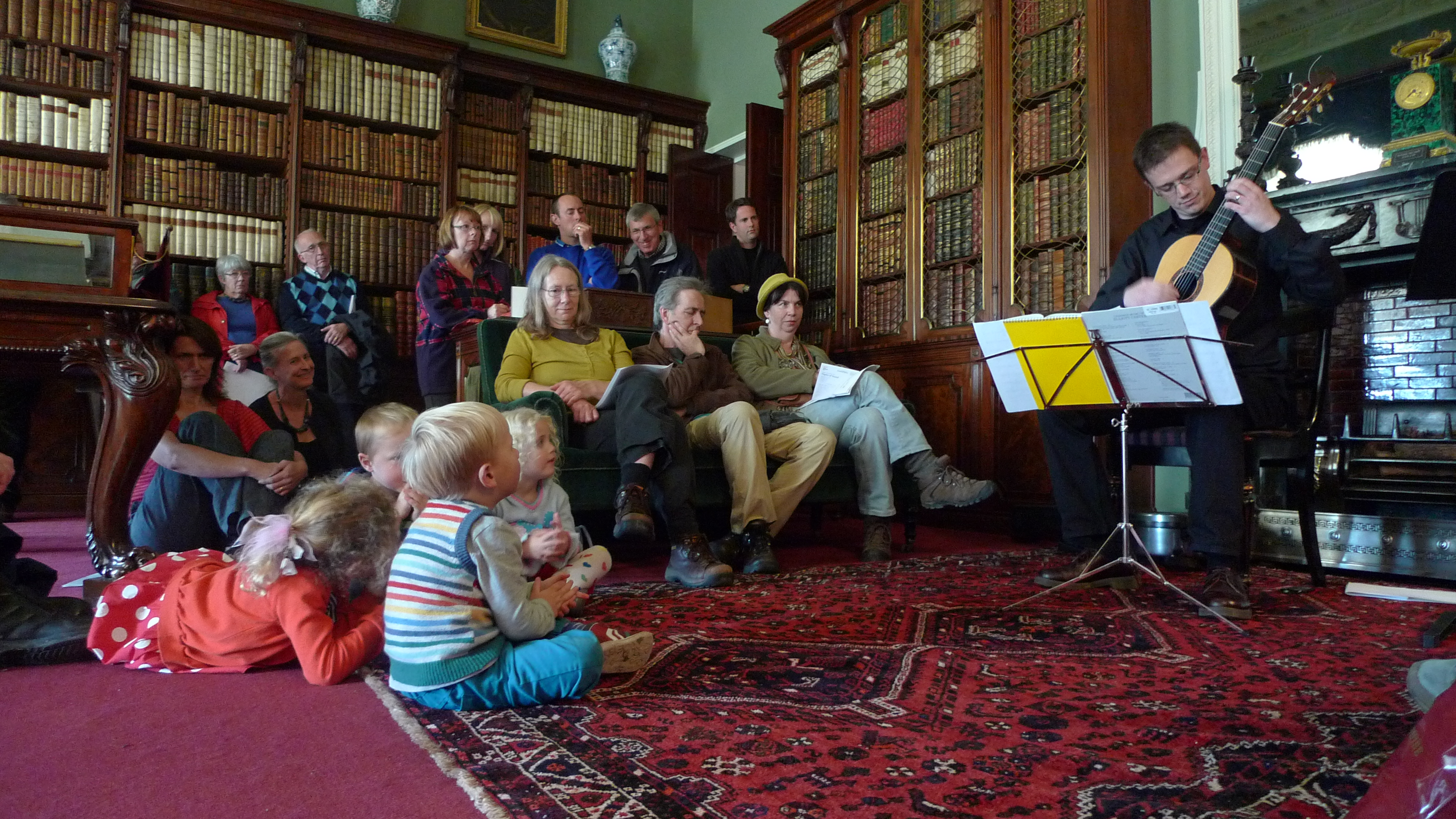 text by Schofield and Tatton volunteers, that ran concurrently with the Biennial show. As well as a display of Elizabeth Syke's music books, the exhibition included a new musical automaton by Aura Satz, continuing the theme of mixing history and contemporary creation. The Tatton staff also produced material on Sound Ornaments in the Music Room for the family educational pack distributed to visitors. The 2012 Tatton Park Biennial had 280,000 visitors, of whom 37,680 visited the Music Room. It was widely covered in general and specialist media outlets, and some reviews in international art media singled out Aura Satz's piece for special praise: Creative Times called it a 'moment to savour' and The Lady praised its close engagement with the house's history.
text by Schofield and Tatton volunteers, that ran concurrently with the Biennial show. As well as a display of Elizabeth Syke's music books, the exhibition included a new musical automaton by Aura Satz, continuing the theme of mixing history and contemporary creation. The Tatton staff also produced material on Sound Ornaments in the Music Room for the family educational pack distributed to visitors. The 2012 Tatton Park Biennial had 280,000 visitors, of whom 37,680 visited the Music Room. It was widely covered in general and specialist media outlets, and some reviews in international art media singled out Aura Satz's piece for special praise: Creative Times called it a 'moment to savour' and The Lady praised its close engagement with the house's history.
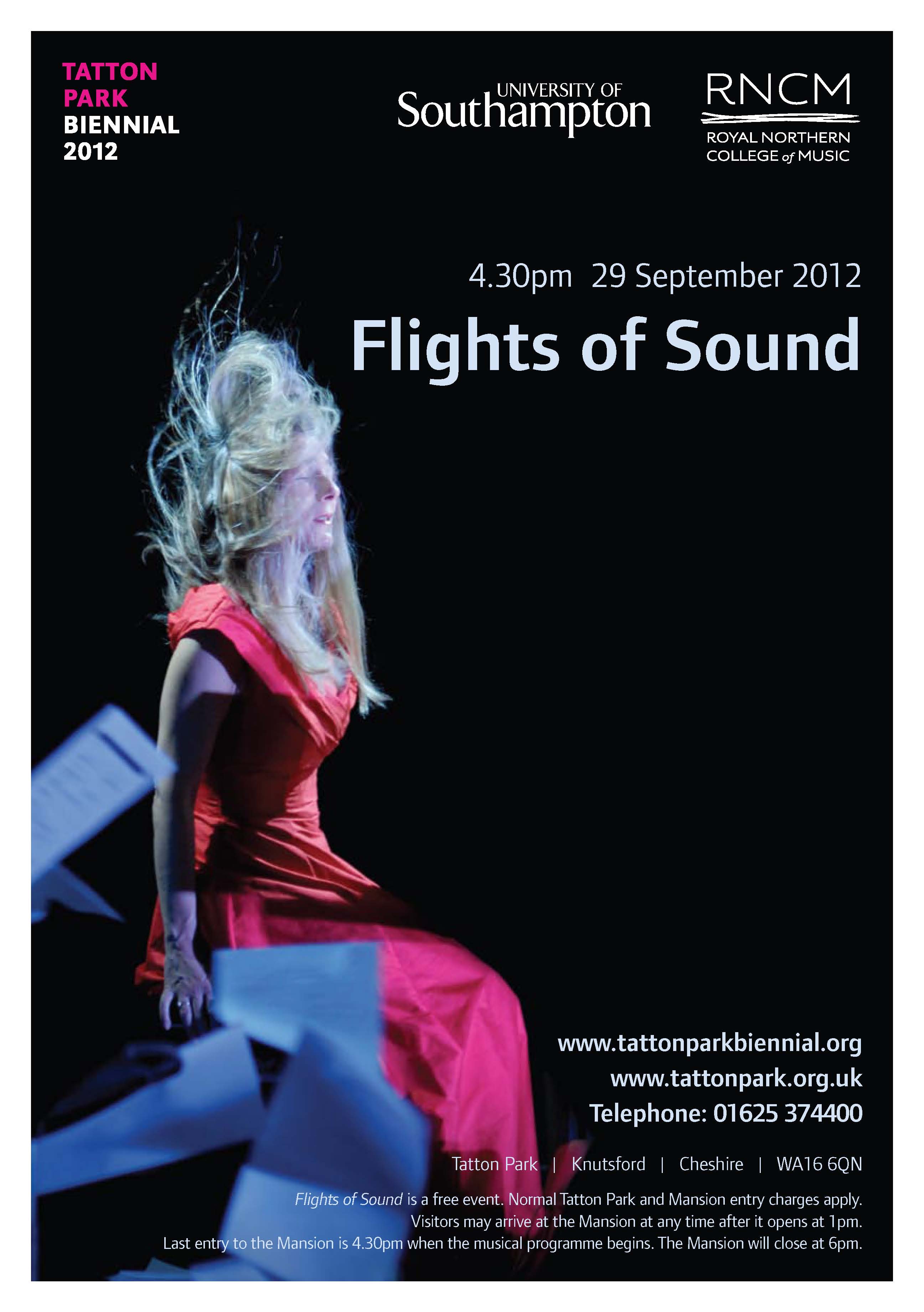 The Biennial's closing event on 29 September, 'Flights of Sound', was curated by Jeanice Brooks and featured contemporary harpsichordist Jane Chapman, guitarist Tom McKinney, pianist Harvey Davies and The Pleyel Ensemble. There was special entry for visitors to the house during the event so that the entire Mansion could be used as sounding frame for an exploration of new and old musical fantasy. Different pieces kicked off at different times throughout the house, while the audience remained mobile (only limited seating was provided for those unable to move continuously). The programme featured 'Visual Score', a collaboration between Jane Chapman and Aura Satz, and world premieres of works by composers Larry Goves and Leo Grant, as well as historic music from Tatton Park's collection. Grant's piece combined and reworked fragments of two arias by Handel th
The Biennial's closing event on 29 September, 'Flights of Sound', was curated by Jeanice Brooks and featured contemporary harpsichordist Jane Chapman, guitarist Tom McKinney, pianist Harvey Davies and The Pleyel Ensemble. There was special entry for visitors to the house during the event so that the entire Mansion could be used as sounding frame for an exploration of new and old musical fantasy. Different pieces kicked off at different times throughout the house, while the audience remained mobile (only limited seating was provided for those unable to move continuously). The programme featured 'Visual Score', a collaboration between Jane Chapman and Aura Satz, and world premieres of works by composers Larry Goves and Leo Grant, as well as historic music from Tatton Park's collection. Grant's piece combined and reworked fragments of two arias by Handel th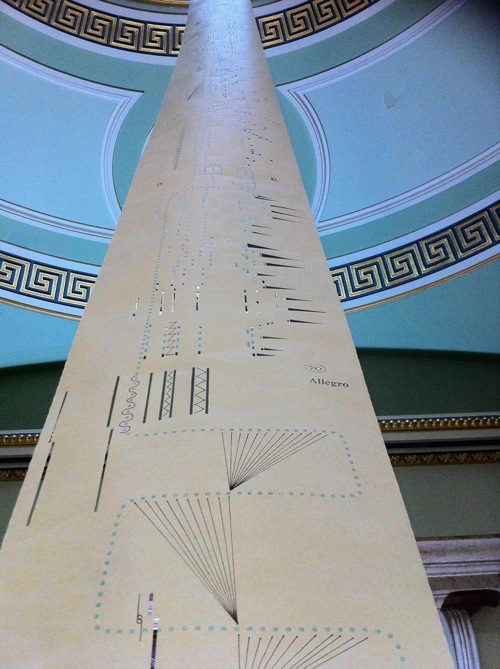 at figure with Elizabeth Sykes's manuscript ornamentation in the Tatton Park collection. 'Visual Score' included a graphic element, a long paper scroll of musically inspired graphic notation that unfurled from the Cupola during Chapman's performance at the harpsichord.
at figure with Elizabeth Sykes's manuscript ornamentation in the Tatton Park collection. 'Visual Score' included a graphic element, a long paper scroll of musically inspired graphic notation that unfurled from the Cupola during Chapman's performance at the harpsichord.
The audience of 70 was a crossover mix of music lovers who had not previously visited Tatton and came especially for the event; art enthusiasts there for the last day of the Biennial; and heritage tourists who simply happened to visit Tatton Park that day. Written feedback included: 'A vibrant and colourful addition to the Biennial! It is a real pleasure to hear the instruments played in this fantastic setting. More concerts would be much appreciated!' 'I really enjoyed listening to old and new compositions, especially in these different acoustics. It created a completely different atmosphere, unusual to most concert spaces'.
Music's Hidden Histories 2013
I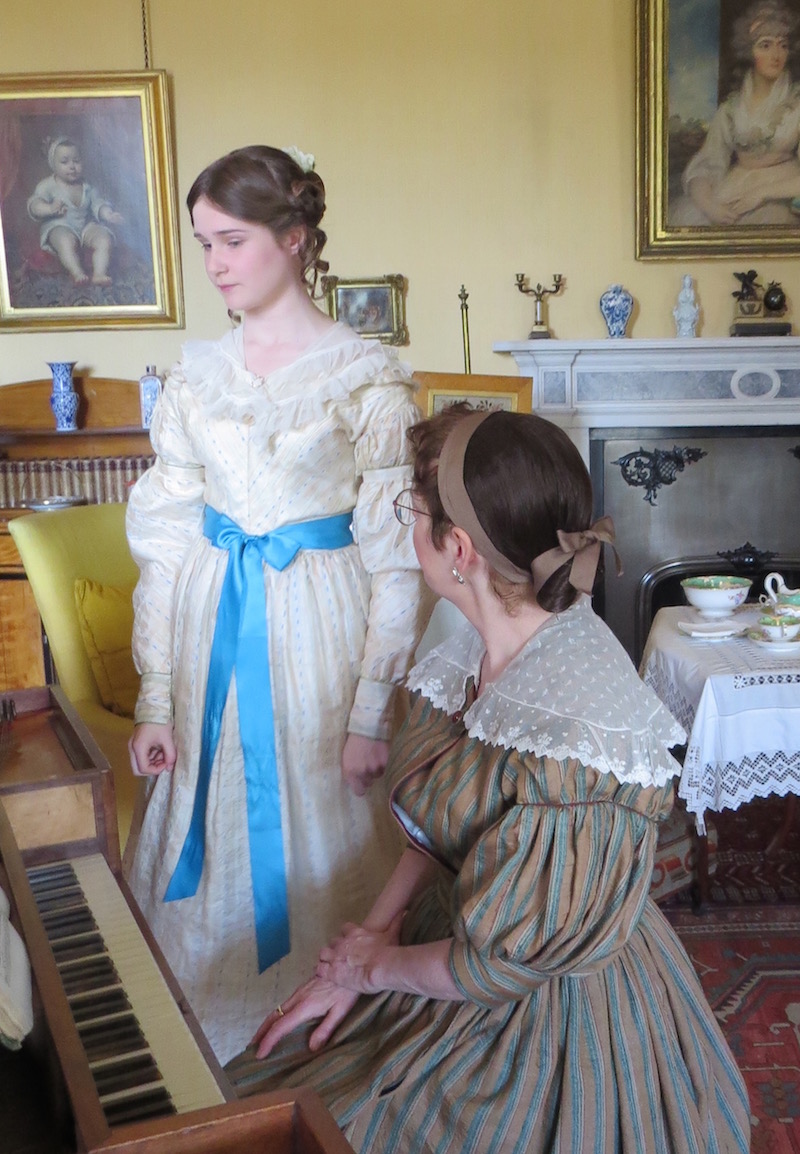 n 2013 the Southampton team received Cultural Engagement funding from the AHRC to create a series of films to complement Tatton Park's Heritage Lottery-funded 'Hidden Histories' project. The aim was to produce short musical documentaries exploring the house's musical past, filmed at Tatton Park but more generally useable for educational events or interpretation in any country house of a similar vintage.
n 2013 the Southampton team received Cultural Engagement funding from the AHRC to create a series of films to complement Tatton Park's Heritage Lottery-funded 'Hidden Histories' project. The aim was to produce short musical documentaries exploring the house's musical past, filmed at Tatton Park but more generally useable for educational events or interpretation in any country house of a similar vintage.
Penelope Cave acted as project manager and the films were produced by the specialist art and music media company WashMedia. Scripted by the Southampton research team, each of the four films explore a different theme, and each was filmed in a different room: the cherry-coloured Music and Drawing Rooms for an overview of the collection, the Yellow Drawing Room for music lessons, the Cupola Hall for dance, and the Library for music collecting. Loan of an 1822 Broadwood grand piano was arranged for the Music Room, so that the harpsichord could be moved into the Library where it appears to have been in 1820. After consultation with the house staff revealed that costumes and historical scenes would be more likely to engage visitors, The Tatton Park Trust provided funding for costume hire from the historical film costumiers Sands Films, who advised on appropriate dress for the years represented in the films. Historic dance practitioner Stuart Marsden provided help with dance scenes, and soprano Emma Bryant performed Elizabeth Sykes's vocal music. Harvey Davies and the Pleyel Ensemble provided chamber music performances while Katrina Faulds and Penelope Cave played harpsichord and the grand and square pianos.
The scripts, scores and still images were prepared over three months from February 2013 and the films shot over two days in June. This schedule was imposed by the funding constraints, but at least one further day would have been useful; although the long June days helped with light, working around visitor hours during a busy period considerably reduced the noise-free time for filming and was not ideal for the (frankly heroic) house staff working on the project. The films can be viewed by visitors at Tatton Park and are also freely available in our video galleries, the Southampton Music department research pages and YouTube.
